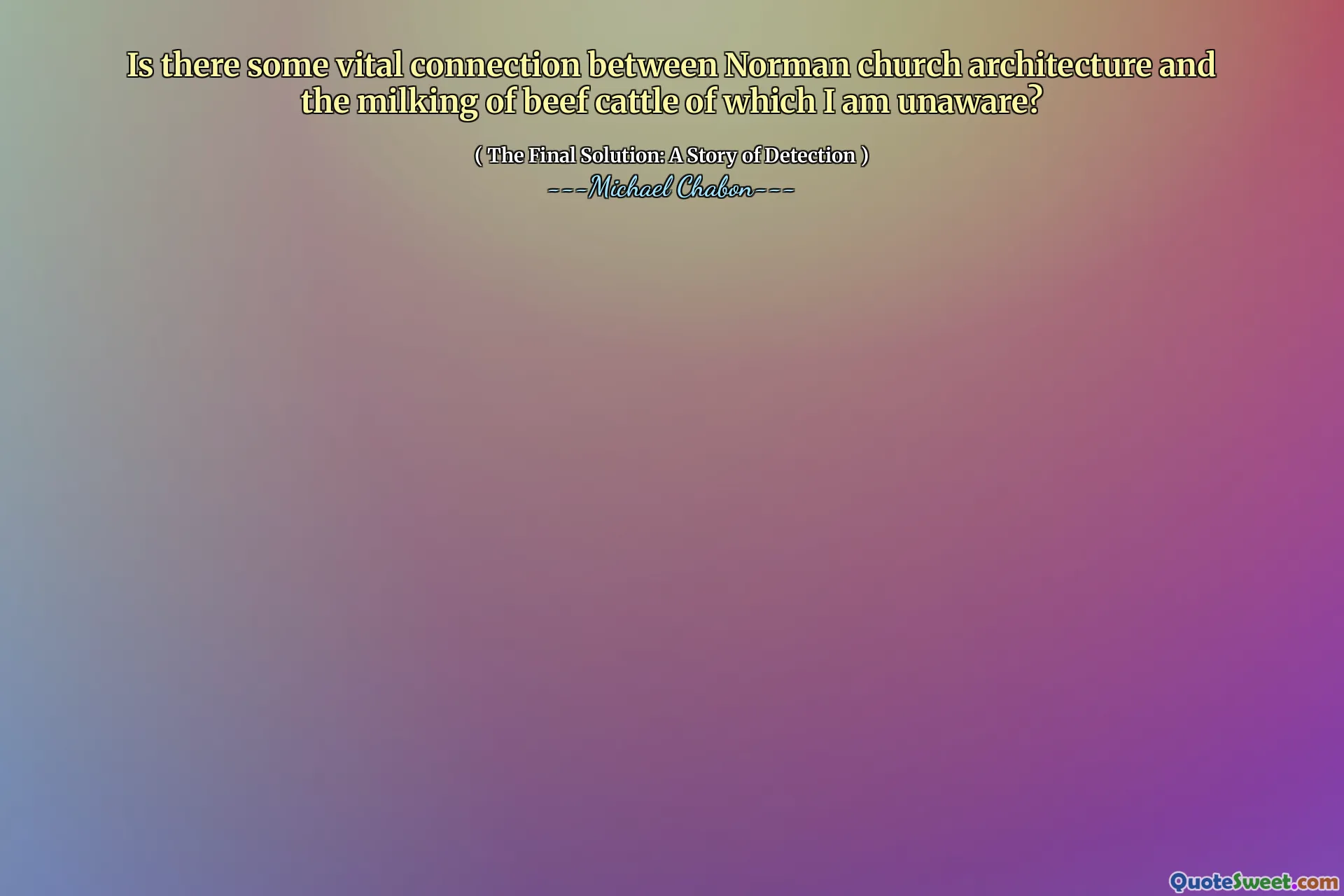
Is there some vital connection between Norman church architecture and the milking of beef cattle of which I am unaware?
This intriguing question from Michael Chabon's The Final Solution invites readers into a realm of surreal or absurdist thought, blending concepts that traditionally lie far apart — the ancient art of architecture and the pastoral, agricultural practice of cattle milking. The quote serves as a striking illustration of how human understanding seeks connections between seemingly disjointed phenomena, perhaps highlighting the complexity of meaning-making in both literature and life. At first glance, there is no apparent link between Norman church architecture, with its medieval stone edifices and spiritual symbolism, and the practical, earthy act of milking beef cattle, which stands not only as a rural chore but also as a symbol of sustenance and matter-of-fact existence. This juxtaposition could be interpreted as a comment on how blind or arbitrary our search for connections can sometimes be, or it might reflect an inherent curiosity and suspicion that no aspect of reality is truly unrelated. It humors the possibility that the world holds mysteries and hidden relations that are beyond our current knowledge, prompting us to remain inquisitive rather than complacent. On another level, it might reflect on compartmentalized knowledge and the challenges of bridging disparate fields of human activity and thought. This quote engages the reader by invoking both puzzlement and amusement, celebrating the human intellect’s relentless drive to find patterns, even when none may exist. It captures a moment of cognitive dissonance that can spark creativity or philosophical pondering, reminding us that sometimes the questions are as valuable — or more so — than the answers themselves.






